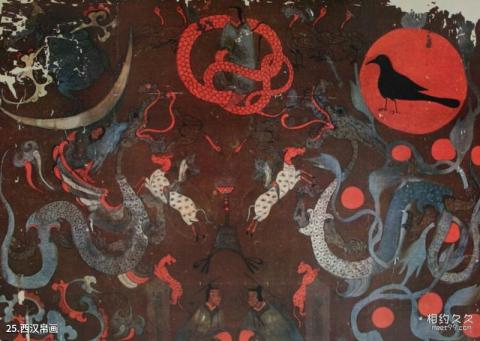
Introduction to silk paintings of the Western Han Dynasty: Silk paintings are rectangular, 200 cm long and 42 cm wide. They are outlined with red thin lines and painted flat with colors such as red, blue, white, and black. The main content of the picture is divided into three parts: heaven, earth and underground. There is the sun and the moon in the sky, a golden crow in the sun, a toad and a jade rabbit in the moon; there are three fairy mountains in the world: Penglai, Fangzhang, and Yingzhou. There is a building in front of the mountain, and there is a lady sitting on the right side, and there is a maidservant in front of it. Three women stood in wait, and another woman knelt in front of the hostess with a container in her hand as a gesture of consecration. From this point on, several groups of life scenes of characters appeared in succession, including music and dance, greeting and seeing off guests, textiles, medical consultations, horn performances, etc., showing the tomb owner's daily life, banquets, and other life scenes. This is the first silk painting discovered north of the Yangtze River in China after the silk painting unearthed from the Mawangdui Han Tomb in Changsha, Hunan. It is not only a precious art treasure, but also of great significance for the study of ancient funeral systems, myths, legends and religious thoughts. This also fully reflects that Chinese folk painting art had reached a very high level at that time.
